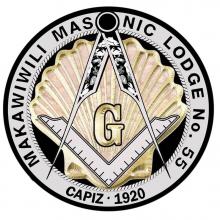
Makawiwili Masonic Lodge No. 55: A Journey Through Time
The Name
The name "Makawiwili" evokes the history of a mountain in Capiz Province that served as a refuge for Filipino patriots during the insurrection against Spain. It also carries the Masonic legacy of Senator Jose Altavas, the first Master of the lodge, who used "Makawiwili" as his Masonic name. The name signifies not only historical significance but also tranquility and allure in its Visayan roots, reflecting a peaceful and attractive place.
The Lodge's Genesis
Founded in Capiz, Capiz, by Jose Altavas of Sinukuan Lodge No. 16, with the support of Robert Clauson of Corregidor Lodge No. 3, Amando Avancenia of Sinukuan Lodge, and other dedicated brethren, Makawiwili Lodge No. 55 began its journey on September 11, 1919. The founders submitted a petition to Grand Master Milton Earl Springer, seeking a dispensation to establish a lodge in Capiz. Despite initial challenges, including difficulties in obtaining demits, the Committee on Charters recognized the merit of the petitioners and recommended the issuance of a charter. Consequently, on January 25, 1920, Makawiwili Lodge No. 55 was granted a charter.=
Constitution and Early Years
On April 9, 1920, Grand Master Rafael Palma, in the company of esteemed Masonic personalities, officially established Makawiwili Lodge and conducted the installation of its officers at the opulent residence of Brother Jose Altavas. Altavas, a dedicated Master who served multiple terms from 1920 to 1923 and later in 1937 up to 1940, laid the groundwork for an illustrious Masonic journey. The early meetings of the lodge took place at Altavas's beach house, creating an atmosphere conducive to the growth of Masonic principles.
An extraordinary milestone occurred on August 14, 1920, when Manuel A. Roxas, then-Governor and future President of the Philippine Republic, joined Makawiwili Lodge as one of its inaugural initiates. His commitment to Masonic ideals led him to assume the role of Master of the Lodge in 1927. Another noteworthy figure, Gabriel K. Hernandez, initiated in the lodge's early years, ascended to the position of Master in 1936, concurrently serving as the Governor of Capiz.
During this transformative period, the lodge secured a substantial 7,000-square-meter lot for its cemetery, symbolizing its dedication to providing a lasting resting place for its members. These formative years not only witnessed the initiation of influential leaders but also marked the acquisition of physical spaces that would play a vital role in the continued prosperity of Makawiwili Lodge.
World War II and Revival
With the outbreak of World War II, Makawiwili Lodge No. 55 was compelled to close its doors, remaining in darkness for a quarter of a century. The desire for revival, however, gained momentum during the Regional Convention of Visayan Lodges in Dumaguete City in January 1966. Led by Judge Valerio Rovira, a dedicated group of Masons worked towards the revival. Grand Master Raymond E. Wilmarth formally authorized the reactivation in 1967, and on April 8, 1967, Deputy Grand Master Mariano Q. Tinio presided over the reactivation ceremonies.
A New Era
The journey to restoration saw significant milestones. In 1970, the members constructed a temporary Temple for their lodge. Notably, in 1983, a permanent structure emerged on a lot donated by the heirs of Rufo Arcenas, a former lodge member. An integral part of this construction effort was the valuable contribution of VW Pablo S Chu, whose dedication and commitment played a crucial role in shaping the Capiz Masonic Temple. His efforts underscored the enduring spirit and resilience of Makawiwili Lodge No. 55, ensuring a lasting legacy for future generations.
The rich tapestry of Makawiwili Masonic Lodge No. 55 intertwines history, dedication, and Masonic ideals, creating a narrative that continues to inspire and resonate within the hearts of its members and the Masonic community at large.
 The Most Worshipful Grand Lodge of Free and Accepted Masons of the Philippines
The Most Worshipful Grand Lodge of Free and Accepted Masons of the Philippines